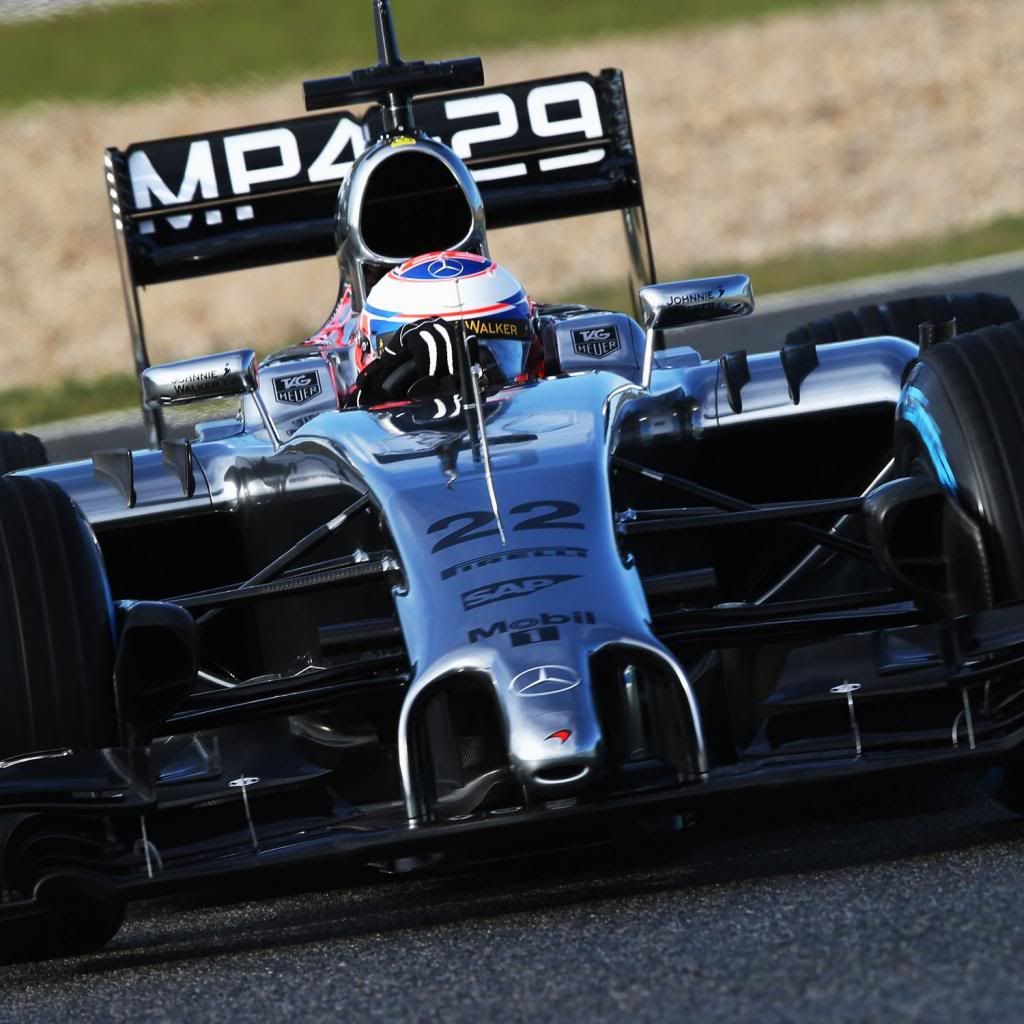So then the RB rake setup is not about increasing the low pressure created by the diffuser?
Brian
- Login or Register
No account yet? Sign up

If u raise rear of the car - u increase car body angle of attack, which leads to higher downforce. If u raise both rear and front of the car - lose downforce, no change on drag:hardingfv32 wrote:So then the RB rake setup is not about increasing the low pressure created by the diffuser?
Brian

I'm pretty sure maximum diffuser height is 125mm above the reference plane.N12ck wrote:Hi, the diffuser can be 1000mm wide by 100mm high,
Because the diffuser trailing edge is higher of the ground? Over the whole floor this would generate more downforce due to better low pressure, as well as the kink becoming more effective, this generates lower pressure, increasing downforce.hardingfv32 wrote:1) But why is the diffuser effectively larger? The roof geometry is essentially the same but just high off the ground. How goes the diffuser create more low pressure by raising both the opening and exit?
And how does this low pressure vortex generates its dfownfore then? Right, by blowing it under the flow, it actually seals the floor. If that isnt the case, why actually placing the exhaust in this area? It is quite obvious by the metal in this area that the exhaust blows here and barely into the diffuser(Only this footplate is made of metal, the diffuser has not or barely any)2) On page 65 of this thread, in a video, James Allison clearly states that the exhaust is used to form a vortex. The low pressure generated by the vortex in then used to generate downforce. No mention of sealing the diffuser.
Brian

Diffuser is a part of a car body. Downforce is generated by the whole body:hardingfv32 wrote:1) But why is the diffuser effectively larger? The roof geometry is essentially the same but just high off the ground. How goes the diffuser create more low pressure by raising both the opening and exit?

No. The vortex is working like a skirt. It prevents air from outside of the car to move under its body. If air moves under body it spoils low pressure zone:hardingfv32 wrote:2) On page 65 of this thread, in a video, James Allison clearly states that the exhaust is used to form a vortex. The low pressure generated by the vortex in then used to generate downforce. No mention of sealing the diffuser.


No scientific law or whatever applies here, it just is the case, the Red Bull car is built around this with the exhaust sealing the floorhardingfv32 wrote:1) "Because the diffuser trailing edge is higher of the ground? Over the whole floor this would generate more downforce due to better low pressure, as well as the kink becoming more effective, this generates lower pressure, increasing downforce."
Why is this the case? The leading edge (or kink) is also higher. Does raising the whole diffuser increase downforce (ASSUMING a fixed air speed and equal quality of side sealing)? What scientific law or principle applies?
Of course Allison will reveal everything about the system. What has he actually said about the exhaust usage? Right that it generates a vortex which creates downforce. Where it does is not said, but with the footplate of the diffuser being covered i metal I find it quite clear this vortex goes under the floor, sealing the floor from the rear wheels.2) "No. The vortex is working like a skirt. It prevents air from outside of the car to move under its body. If air moves under body it spoils low pressure zone:"
James Allison is the Techincal Director of Lotus Renault. Are we to believe you or anyone on this forum have a better understanding of this subject than him?
Brian

I'm quite sure the kink is not the start. the "start" is all the way at the front of the floor.hardingfv32 wrote:1) The start of the diffuser, kink, does raise along with the exit of the diffuser but at a slope or angle related to the rake. Is the raising of the kink good or bad for the efforts of the diffuser to create low pressure? Is this a compromise where a net gain in height between the kink and exit represents an improvement?
